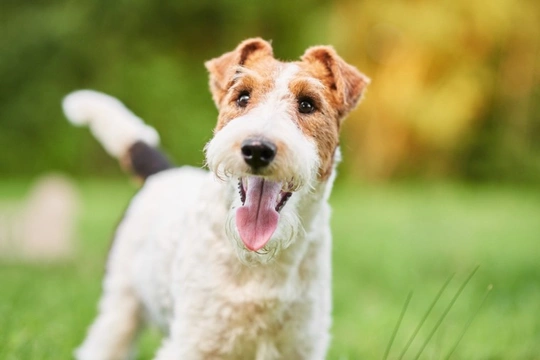
Six symptoms that you might not realise could mean that your dog has fleas
The idea of our dogs having fleas is of course an unpalatable one, and most of us assume that we would know if they did – because we’d see the fleas jumping about, notice the dog scratching a lot, and be getting bitten by the fleas ourselves too.
However, dogs can sometimes develop a significant and really annoying flea infestation without their owners knowing about it, because the signs of a flea infestation in dogs are not always as obvious as they first appear.
Because dogs have thick fur coats and flea colonies have no reason to leave a convenient host, fleas tend to be well hidden when on your dog, and you’re only likely to see fleas jumping ship if the dog has just been treated with a product that kills or repels fleas. Even running your fingers through the dog’s coat or parting it and looking won’t always reveal the presence of fleas, and you need to use a fine tooth flea comb and work slowly and vigilantly to comb through the fur to the roots before you’re likely to turn up evidence of any fleas that are present.
Assuming that you treat your dog for fleas regularly using a veterinary recommended product that is effective in your local area, your dog should be flea-free – but it is a good idea to familiarise yourself with some of the symptoms that can let you know that your dog has fleas that you might miss if you are unfamiliar with them.
With this in mind, this article will tell you six symptoms that you might not realise mean that your dog has fleas, to give you a head start on tackling the issue. Read on to learn more.
Their skin is red and irritated
Dermatitis, allergies and skin sensitivities in dogs can develop for all manner of reasons, and flea bites are just one of them.
Some dogs will have quite a pronounced localised reaction to just one flea bite whilst others won’t have more than a tiny bump in the general area, but if your dog’s skin is red, sore-looking and irritated either in certain areas or across much of their body, flea bite dermatitis might be the cause.
Your dog often appears twitchy and uncomfortable
A dog that has a flea infestation and that is being bitten a lot will likely spend a lot of time itching and scratching themselves to try to get some relief, and they might also rub against hard surfaces and chew or bite at their skin too.
However, if your dog appears twitchy, restless or uncomfortable in general, fleas might be the cause, particularly if your dog has a very dense or long coat. Just as the feeling of having something crawling on us as people is apt to make us twitch or shudder as an instinctive and uncontrolled reaction to the odd sensation of something being on our skin, the same is true for dogs.
If your dog tends to be twitchy or fidgety a lot, consider the possibility that they might have fleas.
They have sparse fur or localised hair loss
Flea bite dermatitis and even individual flea bites in dogs that are not allergic to them can of course be hugely annoying for your dog, and this will result in the afore-mentioned biting and scratching of the skin. Fleas often cluster in certain areas of the body and target them over and over, which means that the irritation is concentrated in that localised area too.
If your dog perpetually scratches and bothers at the same areas of their skin, they are apt to end up with sparse fur or even bald patches, and this is often particularly common behind the ears and at the base of the tail.
There is a lot of crud in the coat
When you use a flea comb to look for signs of fleas on your dog, if fleas are present you’re likely to pick up a few live ones in the comb – but you’re much more likely to pick up quantities of black, speck-like dirt or crud, which is essentially flea poop!
This tends to appear around the roots of the hair most prolifically, so if there is a lot of black or dark crud in your dog’s coat, this might be flea dirt.
There are spots or scabs in clusters on the skin
Individual dogs’ reactions to flea bites can be quite variable, and for some dogs, each individual bite will form a red sore or spot, which may crust over and scab. If your dog has a lot of these dotted over their skin and/or if they form in clusters, fleas might well be the cause.
Your dog is pale and anaemic
Finally, fleas drink blood, and if your dog has such a huge number of fleas on them for long enough, they might actually drink enough blood to make your dog anaemic. This is more likely to occur in chronic flea infestations in tiny dogs like the Chihuahua, which have less blood volume to lose in the first place.
Pale gums and mucous membranes can indicate anaemia, and your dog needs to see the vet if this is the case – both for urgent flea treatment, and to correct the anaemia itself.



